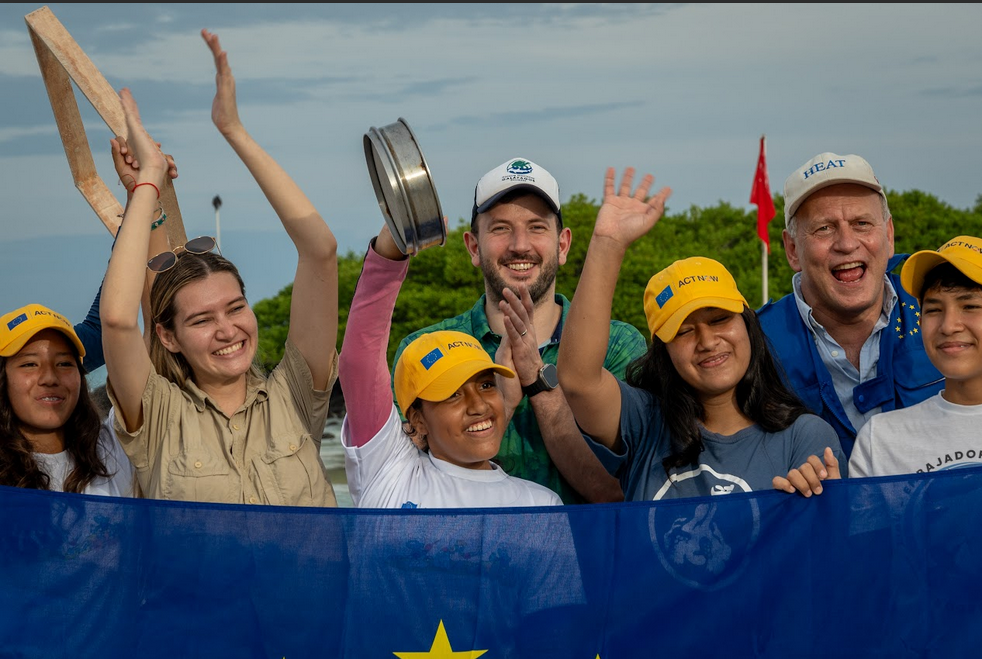European Union in Ecuador carries out actions to promote environmental sustainability in Galapagos

European Union Commissioner, Virginijus Sinkevičius, during the cleaning of Microplastics at Tortuga Bay Beach (Santa Cruz Island of the Galapagos archipelago)
As part of the official visit of the Commissioner for Environment, Oceans and Fisheries of the European Union, Virginijus Sinkevičius to Ecuador, a microplastics cleaning was carried out at Tortuga Bay Beach in Galapagos. This action was carried out as part of the activities carried out by the EU Climate Diplomacy within the global campaign #ForOurPlanet that seeks to join forces to help restore and protect natural ecosystems.
Authorities from the Ministry of Environment, Water and Ecological Transition participated in the clean-up; of the Charles Darwin Foundation; Galapagos National Park; young people from the Science Club “Tibu-Embajadores” and the Ecological Club “Molas” (ECOS) and the team of the Delegation of the European Union in Ecuador.
On the activity, EU Commissioner Virginijus Sinkevičius said: With this activity we can make visible the impact of microplastics on the environment and it is regrettable that it is in one of the best preserved marine reserves in the world, these small particles are in the sand causing a terrible environmental impact, often, invisible. It is necessary to take action and work to reverse the damage we are causing to the planet. Working on this clean-up with young people on the island is an encouraging scenario to act and change this reality.
The initiative focused on the collection of microplastics, small elements that originate from the degradation of large plastic objects and that become part of the feeding of marine species. In order to remove them from the environment, a work of several hours is required, by installing meshes in quadrants of 1mx1m, which allow to sift the sand and thus find the microplastics that are then collected for processing.
During his visit to Galapagos, Commissioner Sinkevičius toured EU-promoted energy sustainability projects such as Living Lab which, implemented by the French Development Agency (AFD), built energy-efficient classrooms for students at Galo Plaza Lasso School. In addition, he visited the Santa Cruz Turtle Breeding Center where he named the 20th specimen born in 2023 of the species ‘chelonoidis darwini’ with the name of Baltya (in honor of the Baltic Sea, where it seeks to restore its biodiversity strongly contaminated by eutrophication).

UE Ecuador
